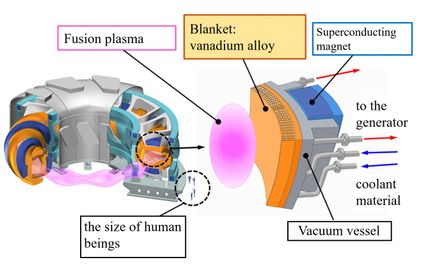New Legislation to Have Domino Effect on Application Markets for Ferrous Sulphate
Demand from Cement Industry for Chromium Reducing Agents Set to Soar, Impact Availability and Prices
Advertisement
A new EU Directive (2003/53/EC), effective from 17th January 2005, makes it mandatory on participants in the cement value chain to control levels of toxic chromium (VI). This directive is set to trigger heightened demand from the cement industry for the reduction of agents such as ferrous sulphate (FeSO4) and tin sulphate (SnSO4) that can reduce the toxic chromium (VI) to its non-toxic chromium (III) form. At the same time, this directive is likely to spark changes in a variety of related end-user markets.
Following the new directive, cement producers have to ensure that reducing agents are added as early as possible in the production process and limit the levels of soluble chromium (VI) in cement to below 2 ppm (parts per million). Moreover, they have to declare a storage period or shelf life for their products.
With the main responsibility for adhering to these guidelines resting with cement producers, they are likely to face a host of new challenges. "The consequent investments into restructuring the production processes, developmental work to find the appropriate reducing agent, as well as the regular purchasing of reducing agent will add significantly to the internal costs of producers," comments Frost & Sullivan's Research Analyst Evelyn Turmes.
"However, in a market characterised by fierce competitive pressure, price increases in cement are difficult to justify."
In this context, cost minimisation will emerge as a key strategic response. With the directive excluding cement in controlled closed and totally automated processes, producers can, with greater experience, reduce the per cent of cement treated, and thus minimise the amount of reducing agent needed.
Cost minimisation is also likely to be achieved through sourcing a cheaper reducing agent such as moist copperas or ferrous sulphate instead of the more expensive, dried ferrous sulfate. R&D into novel production processes can help cement producers avoid the presence of chromium (VI) altogether, thereby circumventing the need for reducing agents.
Estimated to have generated about 4.3 per cent of FeSO4 revenues in 2004, cement applications are poised to contribute a far more substantial 61.9 per cent in 2005, following enactment of the EU directive and will finally account for 69.8 per cent of FeSO4 revenues in 2011.
Boosted by the new directive, overall revenues of the FeSO4 market are set to rise sharply from 51.8 million euros in 2004 to 137 million euros in 2005 and record steady growth thereafter. Large volume demand for FeSO4 from the cement industry will impact end users in other application markets such as water treatment, pigments, agriculture, steel and TiO2.
For instance, the entire structure of the water treatment market for coagulants and flocculants will change as a direct consequence of the directive. Price increases linked to availability issues are likely to make users of inorganic coagulants switch to alternatives with a better price/performance ratio.
Meeting this increased demand for alternative coagulants is crucial for suppliers of inorganic coagulants. Furthermore, manufacturers of inorganic coagulants who have been using FeSO4 as a raw material are also likely to suffer from higher prices and need to find a way of avoiding this price increase.
As ferrous sulphate is generated as a by-product by the TiO2 and steel industries, the critical challenge for them is to find ways to augment quantities of ferrous sulfate to meet the enhanced demand without necessarily having to increase the TiO2 production.
Furthermore, the very attractive conditions in the cement industry are likely to increase the threat of new competitors penetrating with their own FeSO4 by-product. "TiO2 producers who are not currently active in marketing their own FeSO4 by-product need to recognise this new opportunity for selling it into a market generating good revenues and invest in setting up their own marketing division to penetrate the highly lucrative market application for FeSO4 in cement," advises Ms. Turmes.
If you are interested in a research overview, which provides manufacturers, end-users and other industry participants with a synopsis of the latest analysis of the Strategic Impact Assessment of the EU Directive on Chromium Levels in Cement (B527-39) - then send an e-mail to Katja Feick - Corporate Communications using the Contact-button below.























































